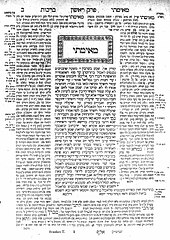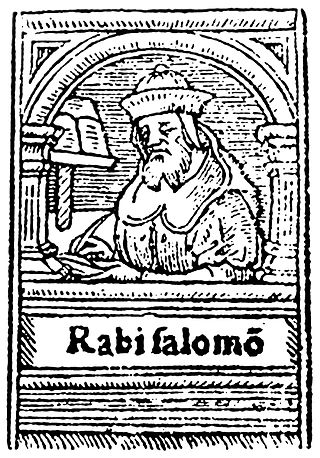
Shlomo Yitzchaki, generally known by the acronym Rashi, was a medieval French rabbi, the author of comprehensive commentaries on the Talmud and Hebrew Bible.

The Talmud is the central text of Rabbinic Judaism and the primary source of Jewish religious law (halakha) and Jewish theology. Until the advent of modernity, in nearly all Jewish communities, the Talmud was the centerpiece of Jewish cultural life and was foundational to "all Jewish thought and aspirations", serving also as "the guide for the daily life" of Jews.

The Tosafot,Tosafos or Tosfot are medieval commentaries on the Talmud. They take the form of critical and explanatory glosses, printed, in almost all Talmud editions, on the outer margin and opposite Rashi's notes.
Daf Yomi is a daily regimen of learning the Oral Torah and its commentaries, in which each of the 2,711 pages of the Babylonian Talmud is covered in sequence. A daf, or blatt in Yiddish, consists of both sides of the page. Under this regimen, the entire Talmud is completed, one day at a time, in a cycle of approximately seven and a half years.
Chananel ben Chushiel or Ḥananel ben Ḥushiel, an 11th-century Kairouanan rabbi and Talmudist, was in close contact with the last Geonim. He is best known for his commentary on the Talmud. Chananel is often referred to as Rabbeinu Chananel – Hebrew for "our teacher, Chananel".

Solomon Luria was one of the great Ashkenazic poskim and teachers of his time. He is known for his work of Halakha, Yam Shel Shlomo, and his Talmudic commentary Chochmat Shlomo. Luria is also referred to as “Maharshal” מהרש"ל, or “Rashal” רש"ל.
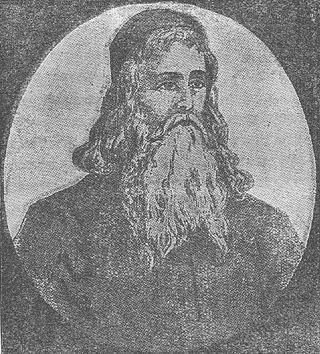
Shmuel Eidels was a renowned rabbi and Talmudist famous for his commentary on the Talmud, Chiddushei Halachot. Eidels is also known as Maharsha.
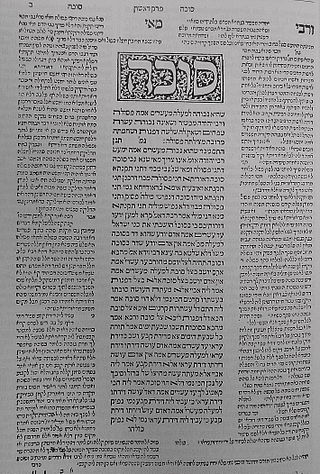
Daniel Bomberg was one of the most important early printers of Hebrew books. A Christian Hebraist who employed rabbis, scholars and apostates in his Venice publishing house, Bomberg printed the first Mikraot Gdolot and the first complete Babylonian and Jerusalem Talmuds, based on the layout pioneered by the Soncino family printers, with the commentaries of Rashi, and of the Tosfot in the margins. The editions set standards that are still in use today, in particular the pagination of the Babylonian Talmud. His publishing house printed about 200 Hebrew books, including Siddurim, responsa, codes of law, works of philosophy and ethics and commentaries. He was the first Hebrew printer in Venice and the first non-Jewish printer of Hebrew books.

Slavuta is a city in Shepetivka Raion, Khmelnytskyi Oblast (province) of western Ukraine, located on the Horyn River. The city is located approximately 80 km from the oblast capital, Khmelnytskyi, at around 50°18′N26°52′E. Slavuta hosts the administration of Slavuta urban hromada, one of the hromadas of Ukraine. Population: 34,918.

Rabbi Akiva Eiger, or Akiva Güns was an outstanding Talmudic scholar, influential halakhic decisor and foremost leader of European Jewry during the early 19th century. He was also a mohel.
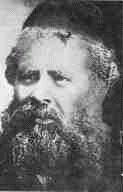
Rabbi Yaakov Dovid Wilovsky, known by the acronym Ridvaz or Ridbaz, was a renowned rabbi, Talmudic commentator and educator.
Soncino Press is a Jewish publishing company based in the United Kingdom that has published a variety of books of Jewish interest, most notably English translations and commentaries to the Talmud and Hebrew Bible. The Soncino Hebrew Bible and Talmud translations and commentaries were widely used in both Orthodox and Conservative synagogues until the advent of other translations beginning in the 1990s.

Shabbat is the first tractate of Seder Moed of the Mishnah and of the Talmud. The tractate deals with the laws and practices regarding observing the Jewish Sabbath. The tractate focuses primarily on the categories and types of activities prohibited on the Sabbath according to interpretations of many verses in the Torah, notably Exodus 20:9–10 and Deut. 5:13–14.

Sifrei Kodesh, commonly referred to as sefarim, or in its singular form, sefer, are books of Jewish religious literature and are viewed by religious Jews as sacred. These are generally works of Torah literature, i.e. Tanakh and all works that expound on it, including the Mishnah, Midrash, Talmud, and all works of halakha, Musar, Hasidism, Kabbalah, or machshavah. Historically, sifrei kodesh were generally written in Hebrew with some in Judeo-Aramaic or Arabic, although in recent years, thousands of titles in other languages, most notably English, were published. An alternative spelling for 'sefarim' is seforim.
Shlomo HaKohen was an Av Beis Din and posek of Vilna.
The Romm publishing house was a publisher of Jewish religious literature from 1788 to 1940. It is known for its 1886 Vilna Talmud, which still serves as a definitive edition.
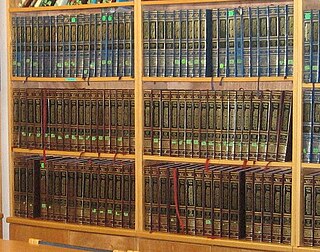
The Schottenstein Edition of the Babylonian Talmud is a 20th-century, 73-volume edition of the Babylonian Talmud featuring an elucidated translation and commentary, and published by ArtScroll, a division of Mesorah Publications.
Moses Margolies or Moshe ben Shimon Margalit was a Lithuanian Jewish rabbi and a commentator on the Jerusalem Talmud.

Dirshu is an Orthodox Jewish international organization whose goal is to strengthen and encourage Torah study. Founded in 1997, the organization produces study cycles, sponsors shiurim, furnishes and grades tests, and offers financial incentives to individuals and groups to learn and master Talmud, Halakha, and Mussar texts. It has also published new editions of traditional Jewish texts, and sponsored major gatherings to celebrate the completion of its study cycles. As of 2018, more than 150,000 people have participated in its programs, which have spread to 26 countries on five continents.
